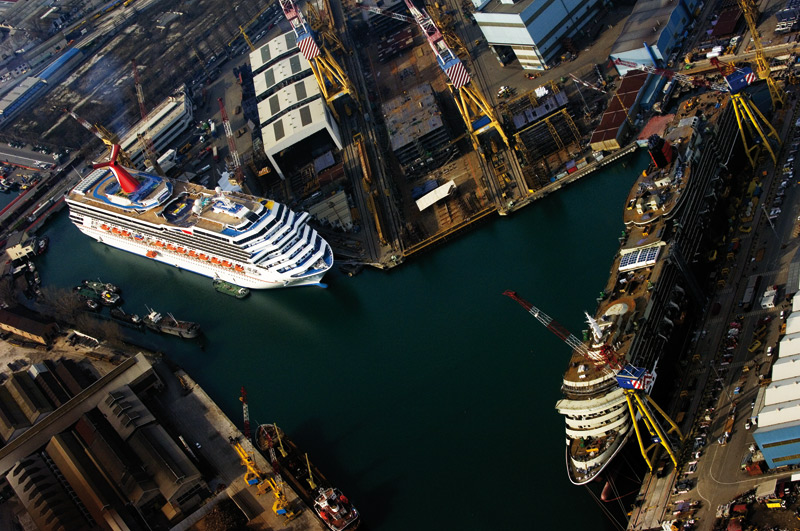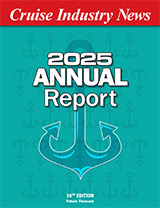 “Our strategy is very simple: It is to work hard,” said Gabriele Cocco, executive vice president for merchant ships at Fincantieri, and responsible for cruise ships.
“Our strategy is very simple: It is to work hard,” said Gabriele Cocco, executive vice president for merchant ships at Fincantieri, and responsible for cruise ships.
“The situation is very difficult for all shipbuilders. That is a fact,” said Cocco. “The future is different – characterized by uncertainty. There is no long-term perspective any more, not even medium-term, instead we are looking at the future almost on a month to month basis.
“There is nothing wrong with what we have done in recent past, but the reality is that today we must do something else. What we did before is not enough to manage the current situation.
“And wait-and-see is not an option. We are taking initiatives to create our own future.”
Taking Out Costs
Fincantieri is looking at ways to take costs out of the production and is considering all aspects to increase productivity, Cocco explained. “We are looking at everything, from our own systems and procedures through the chain of suppliers.”
The strategy going forward also involves having more than one leg to stand on. “Shipbuilding works in cycles: naval work tends to be up when cargo-ship building is down; and cargo tends to be up when cruise is down,” Cocco said.
“But the business is becoming tougher. It is not enough to deliver on time anymore. We must develop products that comply with evolving rules and provide a full package, including financial aspects.”
Fair Price
Pricing follows basic rules of economics, according to Cocco. When building capacity goes up, prices go down. “But the industry has to be careful not to destroy a system that has been built up over 20 years,” Cocco said. “In the absence of new orders, suppliers may start to look at other business and abandon cruise ships.
“But I believe people have enough sense so there is a limit as to how far they will squeeze the yards. Prices cannot go much lower – or they will be at a point of destruction.
“We need the shipowners and they need us. The system has to be balanced. There can be times when one side is dominant, but hopefully smart enough, so as not to kill off the other,” he continued.
One way to reduce costs is to build series of sister ships, according to Cocco, who added that is not so easy in the cruise business, as different brands have different personalities. One standard vessel will not be able to serve more than one brand.
“What we can do, however, is to develop common technical plant modules that can be adapted as we have already done with Holland America Lines’ Vista class which has been modified for P&O, Cunard and Costa.
“When you are able to do this you achieve a scale effect that contributes to reducing costs.”
Cocco said that the common parameter when considering price has been the cost per berth, but with new ships being more complex, cost per berth is a dated concept. Equally important, he said, are the lifecycle cost and the quality of the product (the ship).
Excerpt from Cruise Industry News Quarterly Magazine: Fall 2010



